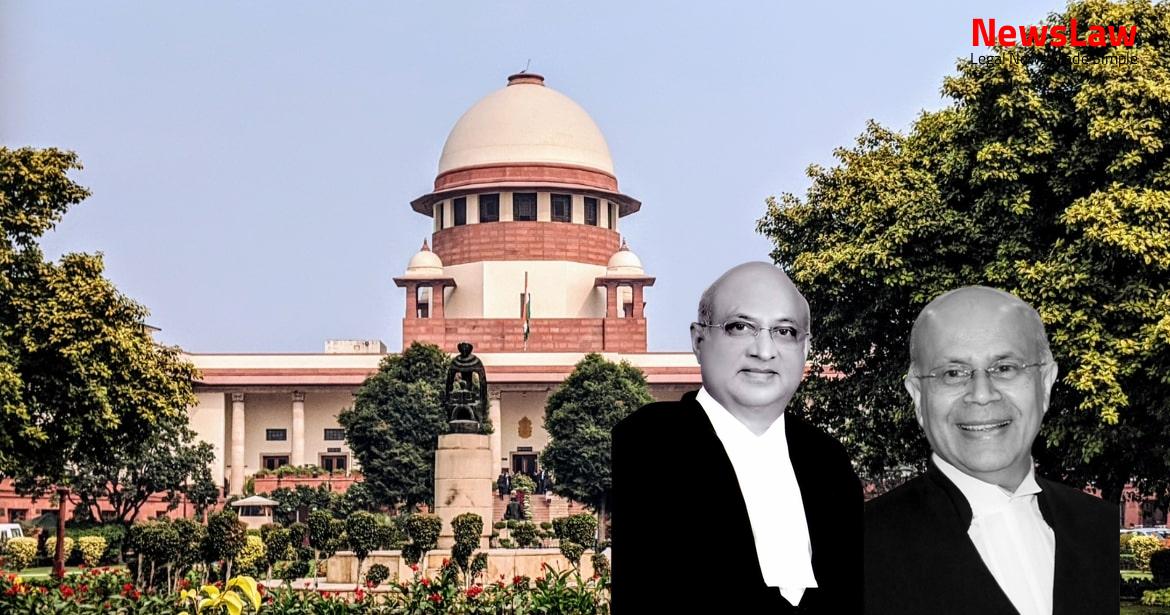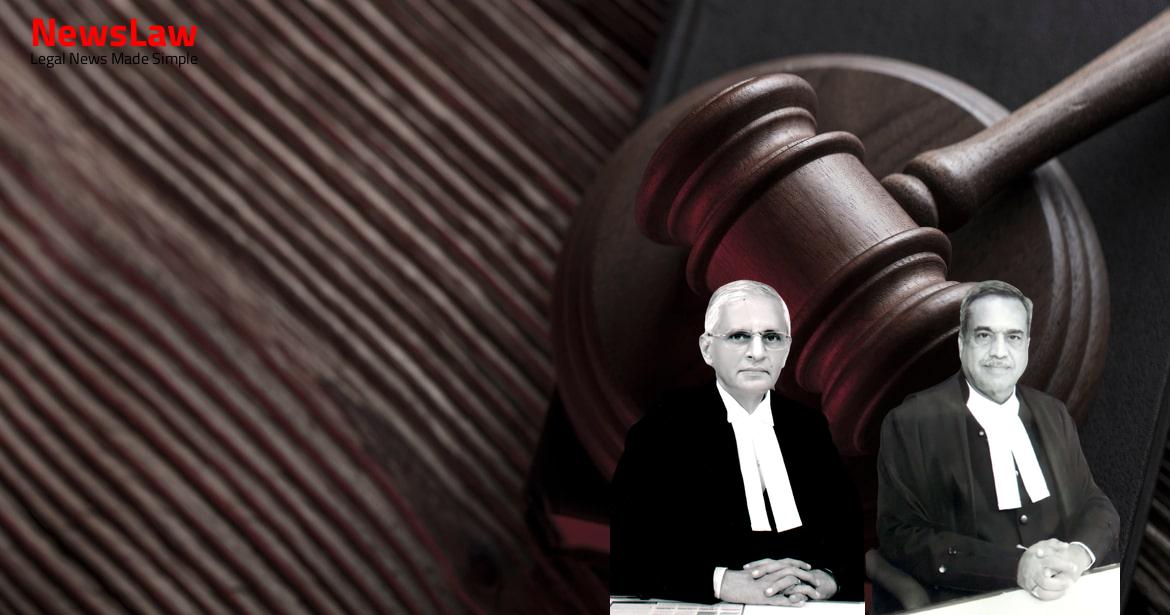In a significant judgment by the Supreme Court of India, the conviction in The Murder Case of Balram & Original Name 1 has been upheld. The case involved the alleged kidnapping and murder of a young school child, with Balram being acquitted while Original Name 1 faced sentencing. The court’s decision reinforces the importance of evidence in establishing guilt beyond reasonable doubt.
Facts
- Acquittal of the co-accused Balram weakens the conviction of the appellant.
- PW-5 testified seeing the appellant with Balram and the victim.
- Reliance on PWs 5, 8, and 9 indicating the victim was last seen with the appellant is based on probabilities.
- The appellant challenges his sentence and conviction under Section 364(A) I.P.C.
- The appellant was sentenced to rigorous imprisonment for life with a default stipulation.
- Belongings of the deceased victim recovered from appellant’s house.
- Police did not attempt to recover the body.
- PW-10, a classmate of the deceased, stated that co-accused Balram kidnapped him.
- Parents of the victim claimed ransom calls were made by Balram.
- Confessional statements of the accused revealed they killed the child and buried the body in the river.
- Appellant acquitted of charges under Section 120B I.P.C.
- Victim, a 5-6-year-old school child, allegedly kidnapped on 12.04.2007 by co-accused Balram.
- Appellant and co-accused last seen with the victim.
Also Read: Land Dispute Resolution: Supreme Court Ruling on Specific Performance
Arguments
- Failure to take any step for recovery of the dead body raises doubt on the alleged incident
- Prosecution case against the appellant relies on circumstantial evidence with incomplete link in the chain of events
- Cases of Sattatiya alias Satish Rajanna Kartalla, Lohit Kaushal, and Iqbal were cited in support of submissions
- The conviction of the appellant stands as there is no need for interference.
- The acquittal of co-accused Balram does not impact the evidence against the appellant according to the State’s counsel.
Also Read: Landmark Judgment: Setting Precedent for Contractual Compliance
Analysis
- The failure to recover the dead body does not necessarily render the prosecution doubtful.
- Identification of the accused by voice is a significant factor in the case.
- Acquittal of a co-accused does not automatically benefit the appellant.
- The recovery of the victim’s belongings from the appellant’s house is key evidence.
- The distinctive voice of a person can be recognized, which aids in identification.
- The absence of the victim’s body does not preclude a murder conviction if supported by other evidence.
- Camouflaging one’s voice does not always prevent identification by those familiar with the speaker.
- The principle of caution regarding the proof of corpus delicti in murder cases cannot be pushed too far as requiring absolute proof.
- The need for adhering to caution was greater in times when execution was the only punishment for murder.
- Discovery of the victim’s dead body with physical evidence of violence is not the only mode of proving corpus delicti.
- Many cases exist where discovering the dead body is impossible.
- Proof of corpus delicti can be through direct ocular account of an eyewitness, circumstantial evidence, or both.
- Under Section 3 of the Evidence Act, a fact is considered ‘proved’ if its existence is so probable that a prudent person ought to act upon the supposition of its existence.
- Corpus delicti or the fact of homicidal death can be proved by telling and inculpating circumstances that lead to the conclusion that the victim was murdered by the accused.
- In cases where the corpus delicti is not found, other cogent and satisfactory proof of the homicidal death of the victim must be provided by the prosecution.
- The fact of the deceased’s death must be established like any other fact, even if the corpus delicti cannot be traced or recovered.
- Circumstances used to establish the fact of ‘homicidal death’ must be of a clinching and definitive character that unerringly leads to the inference that the victim met a homicidal death.
- Identification parade was not considered substantive evidence in this case.
- No incriminating evidence such as the recovery of articles from the appellant was found.
- Appellant was not involved in the kidnapping and abduction of the child.
Decision
- The appeal filed by Original Name 1 is dismissed.
- Original Name 1’s arguments regarding the interpretation of the law were not persuasive to the court.
- The court found no merit in Original Name 1’s contentions and upheld the lower court’s decision.
Case Title: SANJAY RAJAK Vs. THE STATE OF BIHAR
Case Number: Crl.A. No.-001070-001070 / 2017



